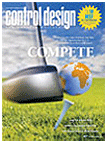Recommended :

Pressure reduction by self-regulated, pilot operated or full control valve with pressure control loop is common in tank blanketing system. When qualifying control valves for pressure reduction application, there are several factors to consider. This first thing you need to consider is which type of control method you would like to implement in order to have a effective control. Following are some fundamental factors may be consider :
- What is the pressure drop, or the difference between inlet pressure and outlet pressure ?
- What is the set point?
- Will there be large flow variations?
- How critical is the regulation/control?
A regulated valve arrangement is proven to be a more cost effective means of pressure reduction in almost all cases. Fast response is one the extra advantage that you can expect from self regulated valve arrangement. This especially become important when applied to non-compressible fluid, or in applications where delayed shut-off might blow a safety relief valve. In additional, self-regulated valve arrangement are sensitive to load variations commonly seen when controlling heating or cooling pressures.
Droop Effect in a self-regulated valve arrangement is one the important factor to consider. There are several question would be raised when you read about Droop :
- What is the Droop Effect?
- How Droop effect affect control performance ?
- How to reduce Droop effect ?
- How to choose a right valve in this arrangement ?
- What are the general rules ?
Read more in the following article.
Related Topic
No comments:
Post a Comment